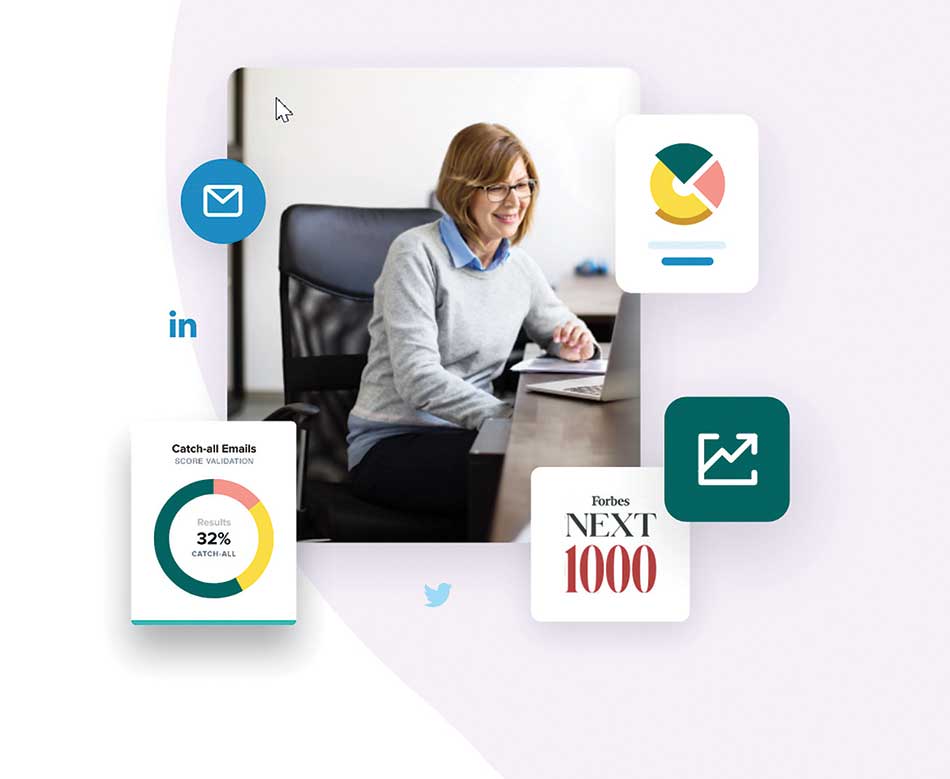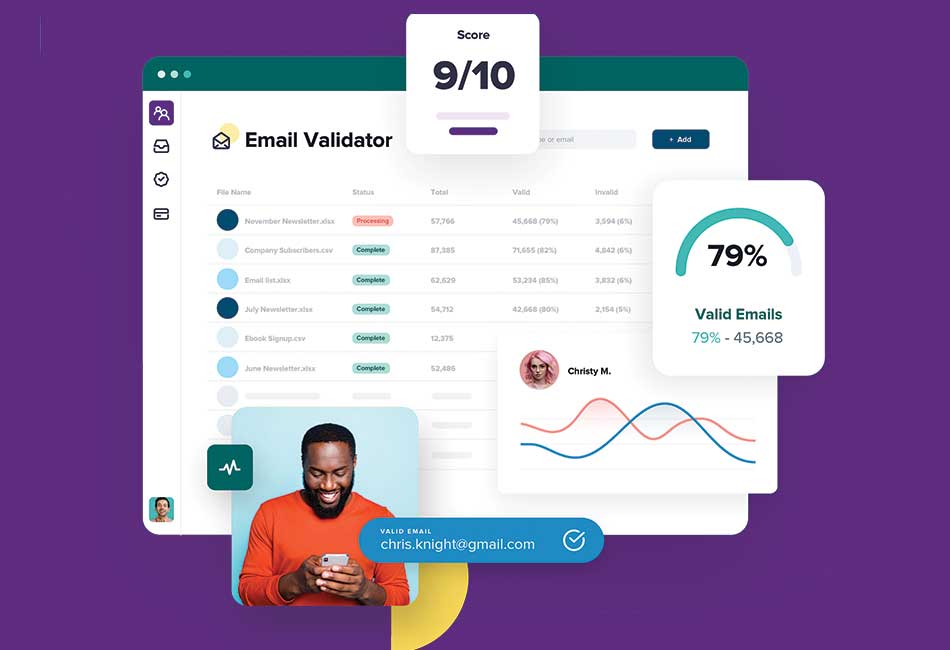Interview with Liviu Tanase, the founder of ZeroBounce
It’s been around for a while now but, arguably, email is still one of the the most powerful communications channels available. Nevertheless, as Liviu Tanase of ZeroBounce explains, its effectiveness for marketers doesn’t come without effort, and the onus is on companies to ensure that the quality of their emails is matched by that of their mailing lists.
Good day, Mr Tanase! It’s lovely to have you with us again. What do you most love about email?
Thank you so much for having me back. I’m honoured to be welcomed.
There’s so much to love about this communication medium that unquestionably connects the entire world. Pretty much wherever human beings roam, email goes with us. It’s personal, professional, informative, instant and – what I love most – it’s not intrusive.
Social media channels rise and fall, but nothing keeps you in the loop quite like email. Even social media channels send us alerts and notifications via email.
Our inboxes are great. Email puts information and interpersonal communication right in front of us, one message at a time, in a linear fashion.
What do I love just as much about email? It’s only begun. I feel it’s going to be the dominating communication method for a long time, with plenty of innovations coming.
You’ve created ZeroBounce, an email validation and deliverability platform. Can you tell us more about what the trigger was for such a product?
Bad data is antithetical to any kind of communication, whether transactional or marketing. It costs us to store it, but that’s not all. Bad data can prevent us from staying in touch with our customers and marketing audience.
Every email sender has a reputation with Internet service providers. A high bounce rate or too many spam complaints can affect your sender reputation, so your emails will go to spam. In some cases, when you fail to address bad data, your emails won’t get delivered at all.
What’s more, you can reach a point where you won’t even be able to send any emails. Email service providers care about their own reputation, and won’t hesitate to block senders who use unverified data. It happened to one of our customers, who was able to reinstate his account after he validated his email list.
With data degrading at an average rate of 25 percent every year, I knew there would be a tremendous need for a service to maintain email databases. Together with my team, we asked ourselves: “What kind of service could help people have the best shot at reaching the inbox?”
We wanted to build the most accurate and secure email validation service. That’s how ZeroBounce came to be.
Aside from email validation, ZeroBounce offers several other email tools. What led to the development of these tools?
We started with just email validation, but over time ZeroBounce has expanded to offer an entire suite of email deliverability tools. As marketers have become more educated, they’ve learned how crucial email validation is.
After seeing its inherent value, they wanted to know if there was more they could do to increase their deliverability. We’re always trying to get better. Our goal is to anticipate these needs and develop the technology to address them.
As a result, we launched an email scoring service and followed that with an email deliverability toolkit. One of the more fascinating tools is our inbox tester; you can see whether your email will land in the inbox or spam, or if it won’t get delivered. You can know where it’s going to go before you hit send.
Then there’s our blacklist monitor that can help you find out if your IP or domain is on any blacklists. Ending up on one of those can really derail your deliverability.
The newest tool, Activity Data, pinpoints the most active subscribers in your email list – people who’ve opened, clicked, forwarded, or unsubscribed from an email in the past year. Seeing when a person was last active in their inbox gives you a great advantage when you’re running email campaigns.
If someone could follow just three email deliverability best practices, what would be your recommendation?
If you learn about and prioritise the following, you’ll be in great shape:
- Keep a fresh email list. That means making sure all your contacts are valid and there’s a real human being behind them. But it also means removing unengaged subscribers after three months and using double opt-in. This subscription method asks people to confirm they want to be on your mailing list.
- Test your emails. This entails testing how it renders on both desktop and mobile devices and checking all links to ensure they are functional. Also, it means using reliable technology to test your email deliverability. Something as simple as using link shorteners can cause your campaign to go to spam. Knowing that allows you to make the necessary changes so that you can reach the inbox.
- Send relevant content. Always search for ways to make your content better. Highly relevant emails get engagement. Not only does that give you more chances to convert, it also fosters healthy inbox placement. When people open and click through your content, Internet service providers are more likely to deliver your emails to the inbox.
How can marketers tell that their campaigns are going to the spam folder?
It’s tricky, because email service providers will report that a percentage of your emails were “delivered”. However, that doesn’t mean your emails went to people’s inboxes. It could very well be that they were “delivered” to the junk folder. So, many senders don’t suspect anything, since their reports usually show 95+ percent successful deliveries.
A good rule of thumb is to keep an eye on your engagement metrics. They paint a clear picture of how many people actually see your campaigns. Open rates are less reliable, but your click-through rates are a good performance indicator. If you get fewer clicks and you don’t suspect your content is the cause, then your emails may be landing in spam.
The most effective way to tell if you have deliverability problems is to test your emails before sending. With all the technology available, it’s a shame to waste resources on campaigns that don’t land in front of people. Running an inbox test takes only minutes and can save you many headaches.
Aside from email deliverability, ZeroBounce also prioritises top-notch customer service. In what ways is outstanding customer service a critical aspect of an effective email solution?
People who have an email list sometimes need to send something out right away. If they haven’t cleaned their list in a while, they may realise they need to do this and be on a deadline.
Although ZeroBounce is as intuitive and user-friendly as possible, we also know that an issue can always come up. I wanted our customers to reach a live person who could help any time of the day or night and every single day of the year.
Every minute someone is unsure of anything is energy and time taken away from them doing what they need to do. Marketers and business owners are busy. We have people who can help with anything.
The past years were challenging for most businesses, and somehow the pandemic seems to stay a little longer. How do you think all these dynamic changes will affect email moving forward?
Email became more ingrained in business than it ever was. During and after the lockdowns, it has been a vital tool for communication. While everything was slowing down and changing in 2020, email was exploding. Bricks-and-mortar shops were either closing or reducing hours, but in the email world, the “on” sign was always flashing.
Furthermore, for some businesses, email was their lifeline. They transitioned from in-person interactions to relying on email to communicate and make sales. It helped many businesses survive.
So, what does the future hold? Everyone got more accustomed to email for receiving alerts or making purchases. As most places reopened, the efficiency and reliability of email hasn’t gone away. Businesses who didn’t use email newsletters and campaigns found out how much they needed them.
We know that entrepreneurs are prone to excessive stress and burnout. How do you stay efficient at work without neglecting your well-being?
I do it by following a set of rules I set for myself. For instance, every morning, I have a little time for myself and my family. Even 10 minutes will set a different mood for the day. I usually talk to my wife and we play with our dog outside. Getting in the sun first thing in the morning fills you with good energy.
My days are busy, with long working hours, but another rule I have is to work out at least three times a week. Aside from that, my wife and I take the dog for a walk on the beach in the evening.
Another important aspect is to trust your team. When you build a reliable team, you can focus on your work, because you know things are getting done. I have a solid team of people I can count on.
Start-up culture can be so intense. How do you check and support the well-being of your team?
It’s true, being a part of a tech start-up can be intense, even overwhelming at times. The interesting thing is that people who are drawn to it have an energy that resonates with this fast-paced environment. I’ve observed my team through the years; they tend to be people who feel stimulated by new ideas and ambitious goals.
That’s something any start-up founder appreciates. However, the massive shift to remote work can exacerbate the tendency to overwork. People found themselves unable to separate their work from their private lives. Many started working more than they did in the office.
We wanted to prevent exhaustion and burnout by letting our team know they can take time off whenever they need it. ZeroBounce offers unlimited paid time off and encourages the team to disconnect and refresh. Some of our employees need an occasional nudge to take that time off. It’s vital that they do.
Apart from this policy, we have excellent managers who are in constant communication with all team members. Whenever an issue arises, we address it right away. Preventing burnout is much easier than treating it.
What does the future look like for ZeroBounce?
There are so many changes that have taken place in the email space. ZeroBounce has always been on the pulse, in many cases leading the way. Our team is restless and always thinking of ways we can make email better.
There’s a new product we’ll announce at the beginning of 2023, so keep an eye on the website. It’s a useful tool many of our customers have asked for, and our team is stoked about the launch.
ZeroBounce is always growing, and that motivates me tremendously. We want to be the natural choice people make to improve their email outreach. Being in the inbox is key. That’s where the magic happens, and it’s the only place anyone can read your great emails.
This article was originally published on November 29, 2022.
Executive Profile
 Liviu Tanase is a serial entrepreneur and telecommunications executive with more than 17 years of experience. He founded five companies and has participated in three exits creating quadruple-digit returns. In 2015, he founded email validation and deliverability company ZeroBounce. ZeroBounce helps businesses maintain email data quality and offers several deliverability tools to ensure the successful delivery of emails to the inbox. Liviu Tanase is also an email deliverability thought leader. He’s a contributor to Inc., Entrepreneur, and countless other industry publications.
Liviu Tanase is a serial entrepreneur and telecommunications executive with more than 17 years of experience. He founded five companies and has participated in three exits creating quadruple-digit returns. In 2015, he founded email validation and deliverability company ZeroBounce. ZeroBounce helps businesses maintain email data quality and offers several deliverability tools to ensure the successful delivery of emails to the inbox. Liviu Tanase is also an email deliverability thought leader. He’s a contributor to Inc., Entrepreneur, and countless other industry publications.







































